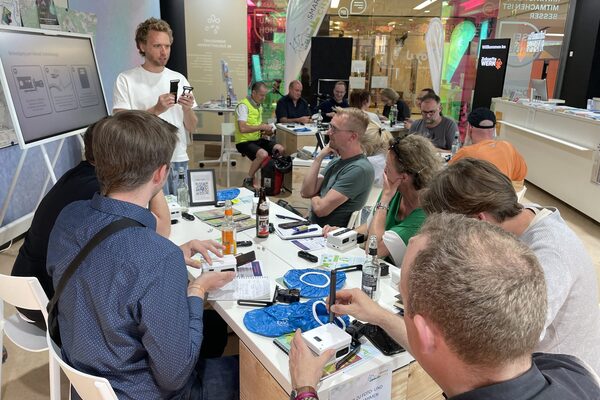Sensor Bike
Citizen science project to collect cycling data
Together with 30 citizens of our city who cycle a lot, the state capital of Wiesbaden collected relevant data on cycling in Wiesbaden over the course of 2025. The data experiment was initially scheduled to run for six months.
The multifunctional sensors collected environmental data, recorded the surface conditions (cobblestones, asphalt, etc.) and the probability with which overtaking vehicles had or had not maintained the minimum overtaking distance of 1.50 meters prescribed by road traffic regulations. All of the cyclists' data was aggregated and visualized in a map view.
The campaign data and further information on the data can still be viewed in the dashboard "Data world: Bicycle use in Wiesbaden".
Committed people from our city have contributed to this project by collecting data during their everyday bike rides. Professors and students from Rhein Main University of Applied Sciences also supported the project. Together with the supporters of this project and the City of Wiesbaden's Cycling Office, the data will be examined and analyzed.
The Citizen Science project was launched during the Smart City theme week "fahrRAD" (May 2025) and ran until November 2025.
Smart City draws initial findings from the data
The available experimental data on cycling in Wiesbaden provides a wide range of insights and enables differentiated analyses that would hardly be possible with stationary counting stations alone:
- Overtaking distances: The data provides initial indications of dangerous situations across the city, which can then be analyzed in greater depth using additional parameters and information.
- Surface conditions: The sensor data reveals where cycle paths are particularly comfortable or in need of renovation, providing precise information for infrastructure planning.
- Routes: The combination of individual routes with sensor data makes it clear which routes are preferred and which are avoided.
Conclusion: Experimental data also contributes to the objectification of discussions and the measurability of qualitative arguments. The data that we have collected together can help us to make good decisions and promote cycling in Wiesbaden. They also help to adapt the cycling infrastructure in Wiesbaden to the needs of cyclists.
The advantages:
- The project provided valuable data that did not previously exist in this form.
- The data experiment provided indications and clues that can support the targeted expansion of cycling infrastructure and an improvement in road safety.
- With a data basis that covers the entire urban area, urgent measures can be prioritized.
Who benefits from it?
- All road users benefit from improved cycling infrastructure, whether they are cycling, driving or walking.
- Vulnerable groups in particular (such as children and young people or older people) can move more safely in traffic thanks to an improved cycling infrastructure.

